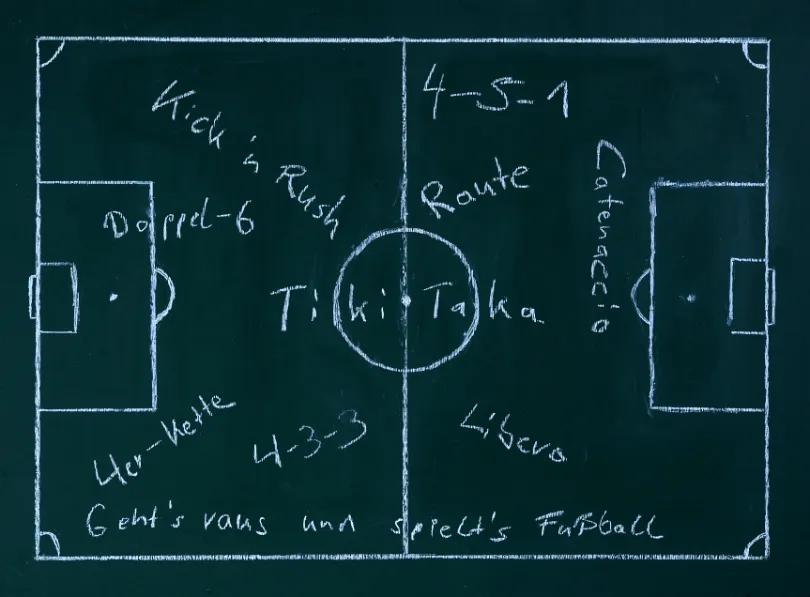It is often said that the United States doesn’t have a distinct national style of playing soccer. Brazil has its style of short passing and displays of skill, and joins the rest of Latin America in emphasizing ball possession over urgent forward movement. Italy is known for defensive play. Teams from Britain, Ireland and some of Scandinavia play in a Route One, long-ball manner, or at least they did a decade or so ago. Germany relies on rapid, accurate movement of the ball. The United States doesn’t seem to be known for anything as distinctive as these.
You get a different impression, however, from reading newspaper accounts of American games from 90 or 100 years ago, particularly games between eastern teams and St. Louis teams such as several U.S. Open Cup finals in the 1920s. The impression you get is a very surprising one. The eastern teams, which used a lot of Scottish players, are described as employing the method then prevalent in Britain of “combination” play based on accurate short-passing. Combination play meant an emphasis on interpassing between players rather than moving the ball forward by individual dribbling. Another old term that crops up in descriptions of the rather Brazilian-sounding way these teams played is the “carpet system,” referring to keeping the ball on the ground. Meanwhile, the St. Louis teams are described as having improved on the British method by developing a New World style of play, a direct, long-ball approach that relied on superior speed, fitness and work rate, and which also sounds rather familiar.
The same contrast appears in a description of a U.S.-Canada game in 1925. The New York Times said: “The Americans displayed a long passing game, parting freely and quickly with the ball, and drew much favorable comment for their excellent head work. The Canadians excelled at dribbling and combination play.”
And listen to this from the 1923 Spalding Guide about that year’s U.S. Open Cup final between Scullin Steel of St. Louis and Paterson of New Jersey: “The first period had given every one in attendance a good knowledge of the Western style of soccer play. The men from Missouri seemed to hold the ball a trifle longer than the Easterners, who went in for quick, short and accurate passes. All through the game, the long kick and run-for-the-ball style of playing by the champions [Scullin was the defending USOC champion] was particularly noticeable. The Scullin team appeared exceedingly rugged and their aggressiveness and high defensive qualities were a treat for those fans who had seen only the foreign, close-combination style.”
Can it be that the manner of play for which British teams have been so much criticized in recent decades actually had its roots in the United States? Can the most famous English exponent of the direct style, Longball Charlie Hughes, have had American ancestors? It’s not the sort of pioneering for which American soccer would prefer to be known, but a lot of American teams, particularly college ones, have been accused of overemphasizing hard running and constant effort at the expense of skill. This has generally been blamed on the substitution rules in American college soccer, but perhaps the roots of it lie farther back.
All that is speculation, however, and I will concede that tactics are not my strong suit. Nevertheless, I think it is interesting today to read accounts of old games with one team playing in a precise, short-passing way and the other playing in a direct, long-ball way, and it’s the former that is said to have played in the British manner.
—o—
The late David Wangerin covered a lot of the same ground as this, and in much greater detail, in a chapter of his book “Distant Corners: American Soccer’s History of Missed Opportunities and Lost Causes,” which was published in 2011 by Temple University Press.
A version of this article first appeared at Roger’s Big Soccer blog on August 15, 2011.

